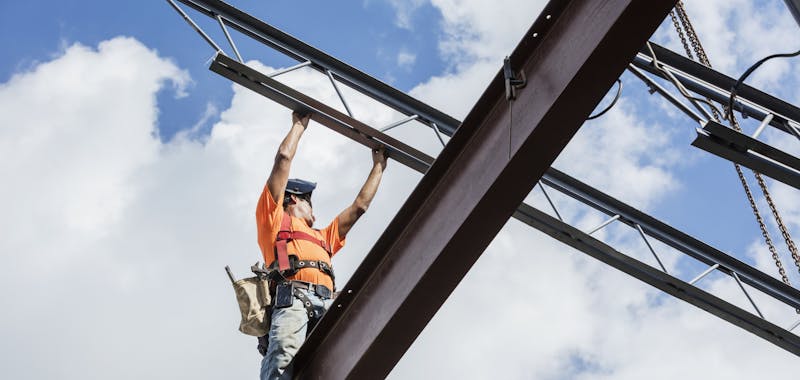
In New York, construction sites are some of the most dangerous places to work. With numerous risks present, accidents happen frequently, often leading to severe injuries or fatalities. When a construction worker is injured, it becomes important to determine fault and identify who is responsible for compensating the victim. With that said, fault in a construction accident is not always clear-cut. This is where the concept of "comparative fault" comes into play.
New York follows the legal doctrine of “pure comparative fault,” a rule that affects how damages are awarded in personal injury cases, including construction accidents. A seasoned New York City construction accident attorneywould know how pure comparative fault works and how the insurance companies may attempt to shift a part of the blame to the injured construction worker to reduce their liability.
What is Pure Comparative Fault in NYC?
Pure comparative fault is a legal doctrine in New York that allows a victim to recover damages even if they are partially responsible for their own injury. Under this doctrine, a plaintiff’s compensation is reduced by their percentage of fault in the accident. This means that a worker can still recover partial damages even if they bear a part of the responsibility for the accident—whether it is 10%, 50%, or even 99%.
For example, if a construction worker is injured in a scaffolding collapse but failed to wear a safety harness, a court may determine that the worker was 30% at fault for their injuries. If the total damages are $400,000, the worker’s compensation would be reduced by 30%, leaving them with $280,000.
How Pure Comparative Fault Works in New York Construction Accidents?
In construction accidents, multiple parties may be at fault, including the worker, the employer, contractors, subcontractors, property owners, equipment manufacturers, and other third parties. Under New York’s pure comparative fault rule, the court will assign a percentage of fault to each party involved in the accident, including the injured worker.
- Assessing Fault: After an accident, an investigation will take place to determine what caused the injury and who was responsible. For example, if a worker falls from a height, the investigation may look into whether the scaffolding was defective, if proper safety protocols were in place, and whether the worker was following those protocols.
- Allocating Fault: Each party’s degree of fault will be assigned a percentage. For example, the employer might be 40% at fault for not providing proper safety equipment, while a subcontractor might be 20% responsible for failing to inspect the scaffolding, and the worker may be assigned 40% of the fault for not using the safety harness provided.
- Damages Calculation: The total amount of damages (medical bills, lost wages, pain and suffering) will then be reduced by the injured worker’s percentage of fault. In the example above, if the worker was entitled to $200,000 in damages but was found 40% at fault, they would receive $120,000.
The Importance of Establishing Fault in Construction Accidents
In construction accident cases, it is critical to establish who is responsible for the injury. New York’s labor laws (such as Labor Law 240, known as the "Scaffold Law") often impose strict liability on certain parties, such as property owners and contractors, for specific types of accidents. However, pure comparative fault can still apply, reducing the compensation a worker can receive if they are found partially at fault.
For instance, under Labor Law 240, property owners and contractors are responsible for providing proper fall protection for workers who work at heights. If a worker falls and is injured because of inadequate safety equipment, the owner and contractor may be strictly liable. Moreover, if the worker contributed to the accident by, for example, refusing to use a harness, pure comparative fault would reduce their compensation based on their share of the blame.
Examples of How Pure Comparative Fault Applies in Construction Accidents
Example 1: Ladder Fall Accident
A construction worker is injured after falling from a defective ladder. The investigation reveals that the ladder was faulty (manufacturer's fault), the site supervisor failed to replace it despite complaints (employer's fault), and the worker failed to use a safety harness (worker’s fault). The court may assign 50% fault to the employer, 30% to the manufacturer, and 20% to the worker. If the worker’s damages amount to $300,000, their compensation will be reduced by 20%, and they will receive $240,000.
Example 2: Crane Accident
A crane operator loses control of a load due to a mechanical failure. It is found that the crane had not been properly inspected (contractor’s fault), and the operator was not fully trained on the equipment (employer’s fault). The injured worker may also bear partial fault if they ignored safety protocols. If the worker is found 25% at fault, their final compensation would be reduced proportionately.
Common Causes of Construction Accidents Involving Comparative Fault
Construction sites are fraught with hazards, and accidents can happen for a variety of reasons, many of which may involve multiple parties. Some common causes of construction accidents where pure comparative fault may apply include:
- Scaffolding accidents: Workers who fail to use safety harnesses or don’t follow safety protocols may be found partially at fault.
- Falls from heights: If fall protection is inadequate, but the worker did not use available safety equipment, comparative fault could be assigned.
- Defective machinery or equipment: If a worker uses faulty equipment or fails to inspect it properly, they could share fault with the equipment manufacturer or contractor.
- Electrical accidents: Improper handling of electrical tools or failure to de-energize circuits can lead to shared fault between the worker, contractor, or equipment provider.
What Training is Required to Mitigate Fault?
To help prevent accidents and mitigate the assignment of fault, construction workers in New York are required to undergo safety training, including OSHA’s 10-hour and 30-hour courses. These programs teach workers how to identify hazards, use safety equipment properly, and follow best practices on job sites. Failure to adhere to training or safety protocols can increase a worker’s percentage of fault in the event of an accident.
The Role of a New York Construction Accident Attorney in Pure Comparative Fault Cases
If you have been injured in a construction accident in New York, be prepared to work with an experienced construction accident attorney. Proving fault and navigating New York’s pure comparative fault rule can be complex, especially when multiple parties are involved. An attorney can help gather evidence, establish liability, and fight hard to ensure that your compensation is not unfairly reduced.
Get High-Powered Legal Representation from a Proven NYC Construction Accident Attorney
If you have suffered injuries in a construction accident in New York, you need an attorney who will aggressively fight to hold the negligent parties accountable for maximum damages. Michael S. Lamonsoff, "The Bull," at the Law Offices of Michael S. Lamonsoff, PLLC, is that attorney.
As one of the prominent construction accident lawyers in New York City, he is licensed to practice law in all State Courts of New York and the Federal District Courts for the Southern and Eastern Districts of New York. He has been inducted to the Board of Directors of the New York State Trial Lawyers Association and has been consistently chosen for the coveted Super Lawyers membership. To schedule your free consultation, call us at 212-962-1020 or fill out this online contact form.


